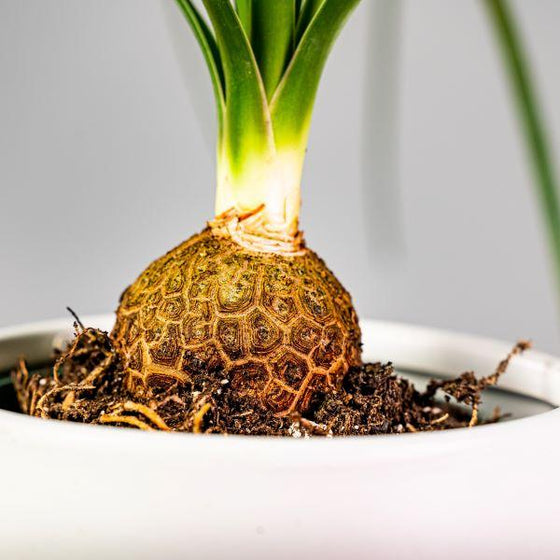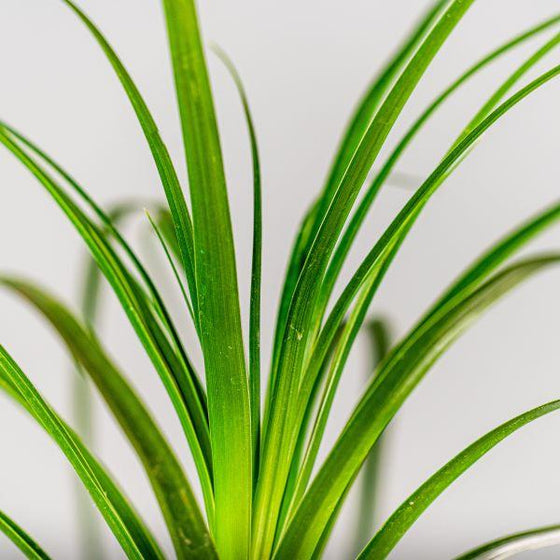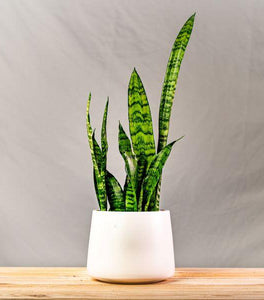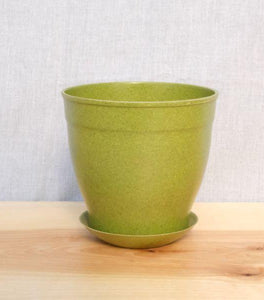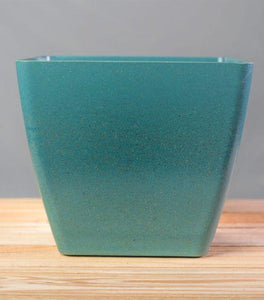
Images Depicted Range in Maturity & Container Size
Pots & Decorations Not Included Unless Otherwise Stated
Ponytail Palms for Sale Online
Ponytail Palms or Beaucarnea Recurvata look like a plant from a Dr. Seuss book. These thick trunks produce a matching "ponytail" of grassy green foliage at the top. The leaves twist and curl as they cascade, resembling human hair. These plants may look silly, but they're no joke regarding how easily they grow. Ponytail Palms like to stay mostly dry and occasionally need water.
They prefer bright indirect or some bright direct light and well-draining soil. These entertaining plants do well in small containers, staying root-bound. As part of the Agave family, The Ponytail Palm thrives indoors when given bright indirect or direct light. They prefer to have dry soil and can sometimes be found in the cactus or succulent sections of garden centers because they despise staying wet. These Seussical plants stay relatively compact when kept as houseplants because the container holds back their growth and development. The Ponytail Palm likes to stay rootbound and does well as an accent plant or focal point in a room.
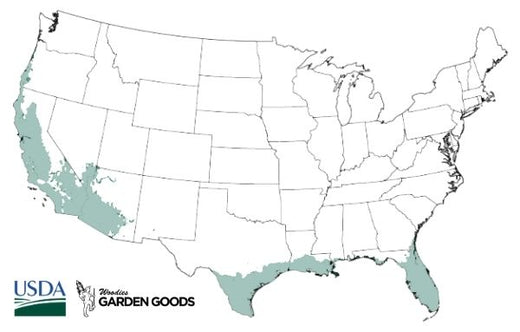
| Hardiness Zone: | 9-11 |
|---|---|
| Mature Height: | 30 to 36 inches |
| Mature Width: | 24 to 30 inches |
| Classification: | Green foliage |
| Sunlight: | Bright indirect or some direct light |
| Habit: | Upright |
| Flower Color: | none |
| Foliage: | Green, grassy |
| Soil Condition: | Well draining, cactus or succulent mix (part sand) |
| Water Requirements: | Likes to dry out between watering |
| Uses: | Excellent indoors as focal point or background |
How to Care for Ponytail Palm
Before you buy a Ponytail Palm Plant, make sure to read about the care instructions that are required and recommended to keep this plant healthy and flourishing.

What is the best light for Ponytail Palms?
Ponytail Palms do well with bright, indirect light or some direct light. An eastern or western-facing window would be ideal. Windows with Southern exposure would work as well. This placement only works as long as some shade is available while the plant transitions. Otherwise, leaves will burn or turn brown from too much light.
How do I water Ponytail Palms?
During your Ponytail Palm's growing season, water your plant once every 1 to 2 weeks. This plant has no trouble drying out in between waterings. Their special bulbous stems store water, so be very careful not to overwater your houseplant. During the winter, or their growth dormancy period, cut back on watering to once a month.
How do I fertilize Ponytail Palm Plants?
Any all-purpose fertilizer will work for Ponytail Palms. Indoor houseplant fertilizers fall into two groups: water-soluble, liquid quick release, and granular, slow-release fertilizers. Jack's Classic Indoor plant food works well as a powder, quick-release fertilizer. When this fertilizer is combined with water, it will quickly provide nutrients to a plant that has been in a container for an extended time. Osmocote Indoor/Outdoor is an option as a granular, slow-release fertilizer that can be applied while potting and planting. Any fertilizer offers nutrients that help plants transition to a new environment.

What is the best soil for Ponytail Palm Plants?
Ponytail Palm plants are native to Central American desert areas. When used as an indoor potted plant, they thrive well in a cactus or succulent potting mix. Try combining the potting soil with peat to improve your soil's richness. Following these potting steps will help ensure your plant has the best growing conditions.

